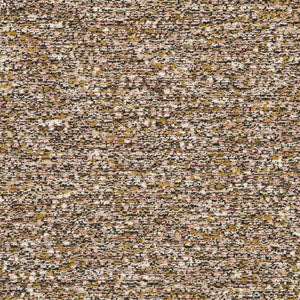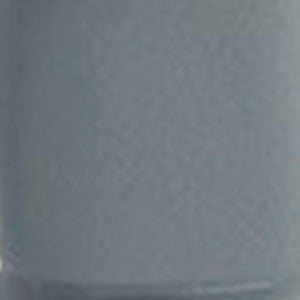Family
A sober and minimalist review of a typical Parisian-like duplex
At
Jordane Arrivetz, Adrien Ohannessian Oscar, 7 and Ysé, 4 years old
Her name is probably not unfamiliar to you: in 2021, interior architect Jordane Arrivetz designed the spectacular seventies-inspired decor of the bar-restaurant Bonnie, conceived as a glass showcase with a breathtaking view, perched in balance at the top of the SO/PARIS hotel. Since then, the decorator has been taking on one more luxurious project after another. Let’s admit it: The Socialite Family was quite intrigued by the private interior of the architect. Jordane Arrivetz, Adrien Ohannessian, and their children Oscar and Ysé welcome us into a bright duplex in the heart of Paris. The original oak beams emphasize, as a nod to the old neighborhood where they are located, a clean interior, sprinkled with pieces of historical design. A real little house within the building, thought by the couple as a breath, a serene interior for the whole family. Guided tour.
Location
Paris
Author
Elsa Cau
Photographer
Constance Gennari
TSF
Jordane, Adrien, can you introduce yourselves?
Jordane
I’m a decorator and interior designer. I run an agency with around ten members of staff, and we mainly work on hotel and restaurant projects. I set up my agency seven years ago, just after having my first child, Oscar. Before that, I was the artistic director for the Coste group. For five years I worked in project development alongside industry expert, Jean-Louis Coste. That’s what made me want to forge a career in the hotel and restaurant sector. I have a degree in interior design from the Camondo School.
Adrien
I launched a company two and a half years ago, originally specialising in NFTs (Ed: non-fungible tokens). I work with artists, brands and institutions. We’ve just moved into this new flat in a new neighbourhood. You’re meeting us at the start of a new phase in our lives.
TSF
Jordane, can you describe your style?
Jordane
I don’t really know how to define my style, because I don’t necessarily try to have one. I probably have one just out of necessity, but my projects are so varied that I have to adapt to the context and history of a place, its location and the people I’m dealing with. Each project is, obviously, different because you won’t have the same vision for a Parisian restaurant, a luxury hotel in Geneva or a beach in Cannes. So it’s a different story each time. At the same time, I think one of my constants is to quite freely mix different eras and combine them all in my projects. I’m hugely inspired by the 1970s and 1980s. Material-wise, I love chrome, wood and stone. I don’t work much with colour or patterns, unlike other decorators. I seem to be on a constant lookout for overall simplicity when I evaluate a space. I’m not a huge fan of overly-decorative or busy spaces.
TSF
Do you have a particular favourite right now: a material, or a motif?
Jordane
I don’t try to innovate that much. I like noble materials. There are countless ways in which they can be used: I don’t use the same wood or the same stone… I believe the design is what makes an interior unique.
TSF
Tell us about the history of this place.
Jordane
What we liked about this flat is that it’s not Haussmann-style, unlike the previous one where we spent seven years. For us, moving into this beamed, duplex flat with small, high-up bedrooms, was a bit like having a house in the city. For the decor, I stuck to the simple, noble materials I usually use. We wanted to create a warm but fairly neutral space. I actually prefer to create an environment that leaves room for and shows off objects. I buy a lot of art and design pieces.
What we liked about this flat is that it’s not Haussmann-style
TSF
Can you tell us about a particular piece here?
Jordane
We have a mix of our tastes and objects inherited from our families. That woven vine tumbling off the shelves in the living room is by Sheila Hicks. She was a good friend of my grandfather, who owned a gallery in Lyon and was way ahead of his time. This wooden pouffe, which isn’t really a pouffe, on the floor in front of the coffee table, also belonged to my grandfather; I’ve played on it all my life. Now I argue with my kids when they decide it’s their turn to play on it. It sits alongside pieces we’ve bought ourselves, such as the large Ingo Maurer pendant light above the dining room table, which was one of the first pieces we bought for the flat, before I even redesigned it. The chromed 1980s metal chairs are by a little-known designer, Ronald-Cecil Sportes, who has works on display at the Centre Pompidou and designed furniture for the Élysée Palace, among others. They’re my latest purchase. There’s also this armchair in the bedroom, a prototype of the one we designed for our latest project.
TSF
There are also lots of photographs.
Jordane
Yes! This one in the living room is fun: it’s a photograph that predates Photoshop! It was retouched by hand to remove the woman from the photo before it was published in a newspaper.
TSF
You can relate to that, Adrien! On that note, tell us more about your job.
Adrien
I help my clients navigate what is now a quite technologically complex world. Not everyone understands the intricacies of a blockchain. I have a background in both culture and innovation. I worked in the digital department for three record companies, both indie and major labels. I spent six years as Director of Innovation at Universal Music in France. So I’ve always worn two professional hats: working with artists and understanding new technologies, making sure that it’s sustainable, useful and works well for them. That’s exactly what I did when working with NFTs, which are an exciting and modern technological concept. There aren’t many of us in France who understand how they work. Which is why we were able to win prestigious clients very quickly. I’m passionate about blockchains, particularly from a public utility point of view. We’ve also just launched a second company, Vérifiables, a blockchain-based solution for creating academic and professional certifications. In 2024, for example, we’ll be working on a project to create digital copies of diplomas/degrees. This will bring us into contact with and meet the needs of public institutions and universities. With the explosion of AI, fake certificates now litter the market on a global scale, so there is a fundamental need for our kind of service.
TSF
You seem to be taking the issue further than others.
Adrien
If we look at artists’ rights, for example, blockchains are a response to the over-consumption of content. A rebellion against GAFA (Ed: Google, Apple, Facebook and Amazon, the all-powerful companies that have invaded our daily lives). People Google artists, download their work as a PDF and the artist doesn’t touch a penny. Blockchains will make this impossible, you’ll no longer be able to use someone’s creation for free. It will solve a lot of the problems in the digital world, where there’s currently a digital abundance that provides free access to everything, which is totally unfair. A blockchain makes it possible to potentially enforce these rights and avoid consumer abuse. It’s also a militant act, the establishment of a counter-movement. I think that’s what interests me most, the anarchy-style backlash, a bit like how punk revolutionised the music work! Somehow, technology will also free us from state control.
In the living room, a tapestry element by Sheila Hicks, inherited by Jordane Arrivetz's grand-father.
TSF
Adrien, is music still as much a part of your life as it used to be?
Adrien
Yes! The first project I worked on was with Jacques, a French experimental artist, who introduced me to Agoria, with whom I still work. After that, a number of major companies approached us, including Dom Pérignon, Évian, Renault and well-known Web 3 brands such as Ledger. But we’ve stayed close to our DNA – working with artists and creativity – because it’s a creative world out there. At the end of the day, I feel as though I’m still in the same line of work – it’s a short leap from the internal innovation projects I set up at Universal to my current work with artists, for example! It’s the natural evolution of technology.
TSF
How have your family and upbringing influenced your tastes?
Jordane
My paternal grandfather, Pierre Arrivetz was a decorator and owned a furniture shop in Lyon. He worked with Norman Foster and Philippe Starck, among others. It was one of the first shops in France to sell contemporary 1960s – 1970s designs. This was long before manufacturers like Cassina leapt onto the scene, for example! My father is an architect. My parents were art collectors. I grew up in Lyon, surrounded by artists, musicians and people who partied a lot, it was a bit of a motley crew. We also travelled a lot. In the living room, you’ll see my grandfather’s world map with pins on all the places he visited. He must have circumnavigated the globe four times! We were a very free and open-minded family. This freedom still dominates my life and what I try to pass on to my kids.
Adrien
I’m of Armenian origin and grew up in Lyon. In a family where music played a very important role. My grandmother played classical piano, my father was also a pianist and my brother had a music group in Lyon. From a family point of view, those warm moments around the piano were very important to us, and we do the same when we get together at Christmas. For us, family, music and sharing go hand in hand. Oscar, who’s now 7, is beginning to show an interest in music. It’s a pleasure to help him discover new things, to pass on and share different tastes. Right now, he’s going through a rap phase. Yesterday he found a tape cassette in my cupboards. He wanted to know what it was!It was really funny.
TSF
How do your tastes influence each other?
Jordane
I think Adrien and I complement each other with regard to our backgrounds and what we love. My family history is closely linked to architecture and design.
Adrien
As for me, I grew up around music and well-laden tables! That’s why it’s so important I have a special place for my turntable and my vinyl records… Jordane designed a low, made-to-measure cabinet to perfectly store my record collection.
TSF
Where will we find you in the coming months?
Jordane
We recently completed the Noti Club barge, which is moored at the foot of the Eiffel Tower and houses a restaurant and events room. And we’re currently working on several hotel projects, including the Majestic’s beach in Cannes, which will open at the next film festival.
Adrien
My partner Alexis Delamare and I are very busy! At Renaissance, we’re currently working with the Musée d’Orsay, which will be launching several projects set around digital art and NFTs in 2024, including a first exhibition in February that will showcase the art and music of Agoria, one of the pioneers of this new scene.
TSF
What does The Socialite Family mean to you?
Jordane
This idea of the family in the broadest sense, outside the norms. Contemporary, vibrant, imperfect, cosmopolitan. We love contrast, imperfection and life.
TSF
What’s your favourite piece in our collection?
Jordane
I love the Mara corner shelf for its minimal design. It can be used to dress up the backs of sofas, which I love to place in the middle of rooms in my projects!
TSF
Do you have any good local go-to places you’d like to recommend?
Jordane & Adrien
We love our new neighbourhood, which borders the Marais where we work, and the more popular 10th arrondissement. We often stroll to the SuperFly vinyl shop (53 rue Notre-Dame-de-Nazareth, Paris 3e) and the Borough speciality café (61 rue Notre-Dame-de-Nazareth, Paris 3e). You’ll find the best hummus in Paris at Chiche (29 bis rue du Château-d’Eau, Paris 10e) and Lahmacun at Urfa Durum (58 rue du Faubourg-Saint-Denis, Paris 10e) – just as good as the ones served at Adrien’s Armenian grandmother’s place!
)
)
)
)
)
)
)
)
)
)
)
)
)
)
)
)
)
)
)
)
)
)
)
)
)
)
)
)
)
)
)
)
)
)
)
)
)
)
)
)
)
)
)
)
)
)
)
)
)
)
)
)
)















)